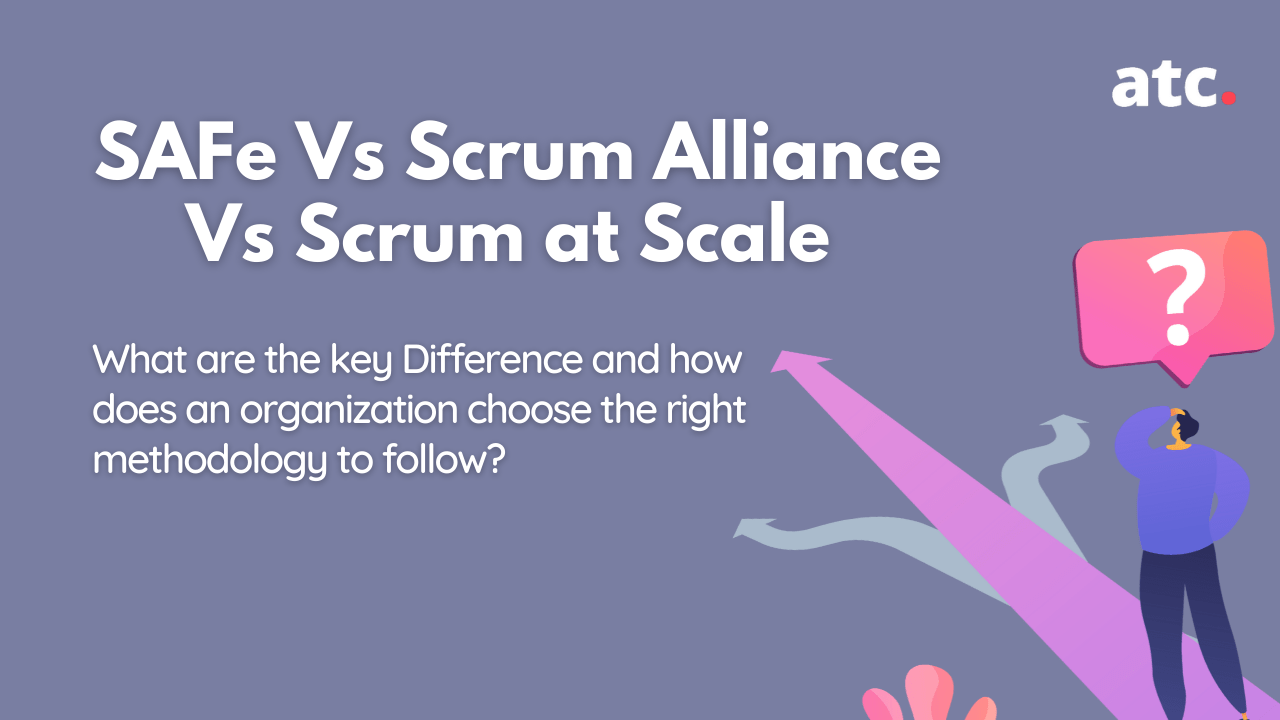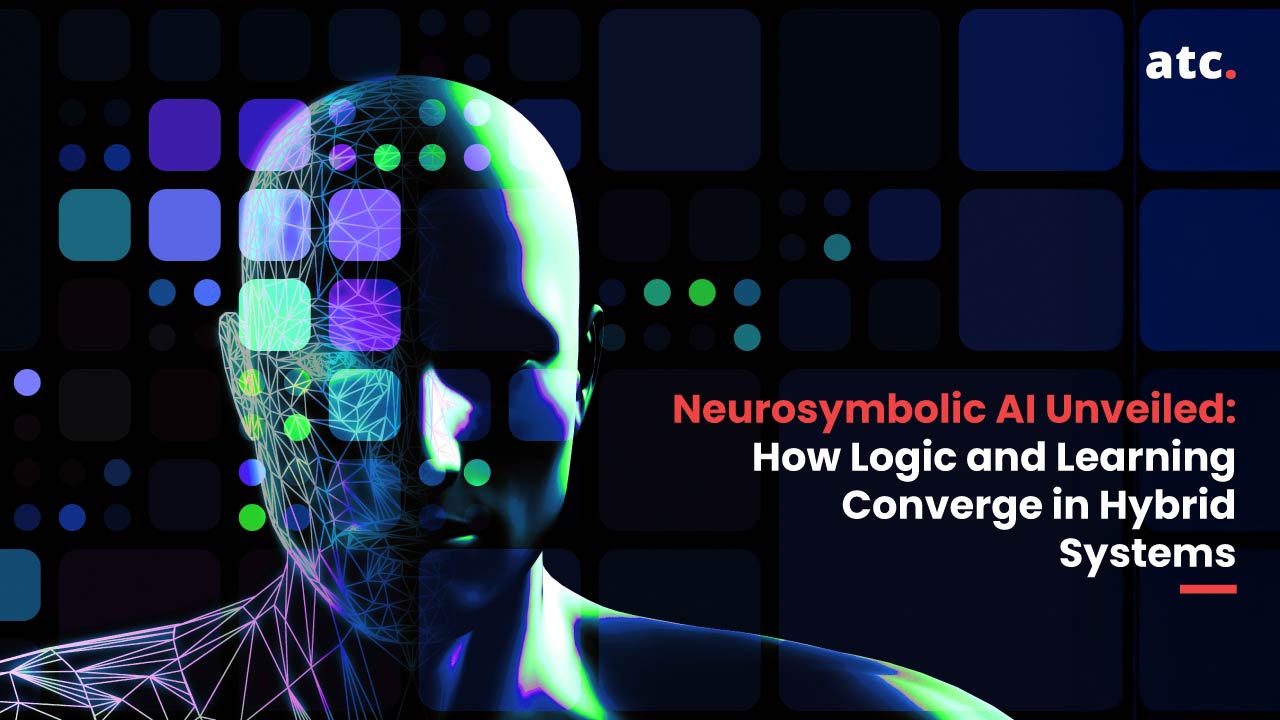Subscribe to the blog
If you are a beginner in an Agile project, you, like many others, might be looking for answers to this question – What are the key differences between SAFe and Scrum Alliance? This article will explain how they are different and, more importantly, whether this is a fair comparison at all.
According to the Scrum Guide, SAFe and Scrum Alliance are not the same at various levels.
The role of SAFe in a business
SAFe or Scaled Agile Framework is designed to give momentum to enterprises' business agility to remain competitive, grow, and succeed in the challenging digital age. Organizations leverage the power of SAFe to bring together multiple teams working on the same program or solution. SAFe offers one of the various methods to scale.
The Agile teams working in a SAFe environment and aiming to create high-value programs are free to make their own choices by picking from the various Agile practices. These choices are based primarily on Scrum, Kanban, and Extreme Programming (XP) to improve their performance. One must note that ScrumXP is the standard adapted version of Scrum in a SAFe environment.
The Scrum Guide clearly points out that ScrumXP differs from Scrum primarily because of the elements of XP, but that's not always the case. It is also clear that Scrum is an add-on framework, and adding XP practices is common and in line with Scrum. However, SAFe takes it further than merely adding XP to Scrum.
SAFe and Scrum are frameworks that function under Agile principles and values. There are definite differences between these two. However, it is always better to have an in-depth understanding of SAFe and Scrum to avoid confusion for users of these products.
Let us start with the definitions of SAFe and Scrum.
Definition
Scrum is a framework that can help people solve complex adaptive problems. At the same time, they can creatively and productively deliver products of the highest value. This definition identifies the role of Scrum, its events, artifacts, and the rules that keep them together.
SAFe is also a framework that offers an approach for scaling agile needed for working in larger enterprises and bigger teams. It can work on the same or multiple products. SAFe is all about implementing lean-agile at an enterprise level.
Scrum is not a methodology as it is often perceived. It is built on the very logical method of empiricism. Scrum replaces the algorithmic approach, which is very structured and programmed, with a more heuristic one. It is based on the principles of self-learning for people and self-organization. Scrum helps deal with the unpredictable nature of the hindrances in the software development process. Scrum is a framework based on the principles and values of Agile while remaining focused on a smaller number of teams.
Let's analyze scrum at a deeper level.
The Scrum framework is primarily focused on the task of product development. As product development is defined as complex work, the developers need adaptive solutions.
We can safely deduce that Scrum has three vital roles with specific accountability towards planning, organizing, and optimizing product development. These are:
Product Owner
The Scrum Guide states the Product Owner is responsible for maximizing the value resulting from the Scrum Team's work.
Scrum Master
The Scrum Master is accountable for upholding the effectiveness of the Scrum and Scrum team. It also ensures that the team adheres to the general practices and processes.
Developers
Scrum developers work towards creating the feature of a functional rise for each Sprint.
To create transparency at work, Scrum has three artifacts
Product Backlog:
It helps to understand the things needed for further development or enhancement of the product.
Sprint Backlog:
It offers a real-time view of what the Developers are doing to achieve during the Sprint.
Increment:
This is the sum of all the work done to date and which are in usable condition.
Scrum has the ability to create five formal opportunities for inspecting and adapting work. Sprint, on the other hand, works as a container event that consists of four different events:
- Sprint Planning checks the backlog of the product and its goal. It takes into account sprint backlog, which includes sprint goals, forecasts, and plans.
- Daily Scrum is useful for inspecting the goal for the Sprint. It adapts the plan to help achieve the goal.
- The Sprint review offers the chance to examine sprint results and make specific adaptations for future work.
- Sprint retrospective helps check processes. It spruces up the process and helps improve the value of the product in the future.
Most users have a question on their minds: when Scrum is such a comprehensive and well-planned framework, why do you need something like SAFe?
The definition of SAFe best answers this question.
SAFe or the Scaled Agile Framework is a series of workflow designs aimed at directing enterprises in scaling lean and agile practices. SAFe Agile Framework is intended for development teams with the foundation based on three (metaphorical) pillars – team, program, and portfolio.
Additionally, SAFe provides flexibility to the product team and helps manage some critical challenges larger organizations face while practicing Agile. SAFe is based on proven best practices.
SAFe is based on three bodies of knowledge for enabling agility in large enterprises that operate on a big scale.
- Agile Software Development
- Lean Product Development
- Systems Thinking
There could be some debate about adopting Scrum or choosing Kanban as an alternative at the team level. Most teams prefer using the Scrum framework over Kanban.
Teams look at SAFe as a modified version of Scrum called ScrumXP. While it seems every bit like Scrum from the outside, it is optimized to a significant level internally.
SAFe has two primary designs. One supports only scaling, while the other supports both scaling and business agility.
Full SAFe and Portfolio SAFe offers six and seven core competencies of business agility and helps organizations achieve agility in an organization.
The other two constructs, namely Essential SAFe and Large Solution SAFe, support only scaled delivery.
Different Roles
The differences as stated in the Scrum Guide between a SAFe Scrum Master and a Scrum Master are as follows:
A SAFe Scrum Master need not know Scrum when a team doesn't use Scrum.
This may seem a difference of not much importance. A SAFe Scrum Master generally does not focus much on helping the team create higher value. They are more sharply focused on improving performance in quality, predictability, flow, and velocity. However, the team can achieve these aspects and miss out on the value-building factor.
A SAFe Scrum Master has to make sure that the team follows the Agile processes. A Scrum Master supports the team to use Scrum.
A SAFe Scrum Master helps to implement SAFe. This is not the job of the Scrum Master. Their focus is more on implementing Scrum.
A SAFe Scrum Master remains focused on the team but does not play a major role in accepting Scrum at an organization level. They have to play a more critical role, and that is to adopt SAFe at an organizational level.
If the team or the organization decides, the SAFe Scrum Master can move away from Scrum. A Scrum Master works towards supporting the Scrum framework as specified in the Scrum Guide.
Here is a more simple comparison of the differences between the two:
Scrum
- It deals with compact and cross-functional teams that are self-organizing.
- It is adopted majorly by the Agile team.
- Middle management does not play an important role in the setup.
- The basic construct is the Scrum team.
- It misses out on many vital aspects.
SAFe
- It deals with large teams spread across diverse locations.
- The entire organization adopts it.
- The two significant tiers of SAFe are Program and Portfolio management.
- The basic construct is Agile Release Train (ART).
- It helps manage all the aspects and features of an organization.
The Differences Between SAFe and Scrum in Terms of Factors:
Context of Implementation
SAFe
SAFe is an Agile framework. It is usually applied when large companies want to implement and expand the Agile way of working beyond the teams.
Scrum
Scrum is a framework for Agile projects. It is ideally used by companies that have a simple organizational structure.
Teams Structure and Roles
SAFe
SAFe plays key roles at four different levels. These include:
- Release Train Engineer
- Program Management
- Value Stream Engineer
- Solution Architect
- Epic Owners
Scrum
The Scrum Team generally has around seven to eleven persons. They deal with these roles;
- Product Owner
- Scrum Master
- Development Team
Team Dependencies
SAFe:
With SAFe, a high level of coordination and alignment is needed between teams and management. This leads to an increase in work dependency.
Scrum:
In Scrum, the extent of dependencies between teams is generally lower than SAFe. Development Teams have the freedom to organize themselves, and they can manage their own work.
Ceremonies and Time Frames
SAFe:
SAFe follows more or less the same structure. A cycle lasts for about two weeks. All the planning, checking, and adjusting are done during this period.
Scrum
Projects are carried out during a sprint within Scrum. It involves a definite time box where different types of ceremonies occur. One cycle could go on for one to four weeks.
What is Scrum at Scale?
Scrum offers an agile way of administering incongruent software development. It helps manage small businesses and scale frameworks of various sizes. Scrum at Scale is an additional framework of Scrum. It takes into account an extendable approach for scaling Scrum. This is achieved by using a series of goals to align the organization.
While Scrum has a challenging but straightforward approach to execute from the core, Scrum@ Scale fails to consider several critical aspects, unlike the Agile Framework. The strategy is customizable as well, with the main feature being the modular approach. You will not find two implementations of Scrum the same.
It is also important to note that the framework needed for Scrum scaling purposes is considered on a case-to-case basis. You just have to adopt the modules required by the specific platform. It gives the team the ability to deal smoothly even with specialized processes.
Let's now look at the benefits of SAFe versus Scrum.
- It helps organizations of large size be more responsive and receptive to employees.
- It boosts up the delivery process.
- It helps develop critical areas such as employee concerns and the production of the whole organization.
- The focus is always on synchronized delivery of efficiency.
- It helps improve quality and mitigates the instances of defective products.
These are the benefits of Scrum versus SAFe.
- It generates high-value attributes and delivers them quickly.
- With increased consistency, it minimizes waste and speeds up tasks.
- It reduces non-productive jobs.
- Organizations can achieve maximal delivery value.
- It helps project-level tracking by close monitoring and detecting, which assists in solving problems quickly.
What is Agile Methodology?
Agile methodology is a method of working on iterative development. Agile software development includes the ability to assist organizations by offering the best of class engineering practices. It also helps in ensuring the fast delivery of quality software. The Agile way of processing ensures a professional approach. It assists in setting the company on the path to achieving its development goals and helps accomplish its customers' diverse needs.
How to Choose the Right Agile Framework?
For organizations not very clear about the importance and roles of SAFe Agile and Scrum, the choice between the two can be a tough one to make. We have seen that it is not easy to point out that one framework is better than the other, primarily because there are no straightforward ways of establishing the superiority of one over the other. The final choice must be based on their needs and applications. Organizations can take into account a few aspects while selecting an Agile framework. They are:
- The circumstances of implementation of the framework and the objective of the organization
- The involvement of management within the project
- The size of the organizations in terms of the number of people working within the company
- The structure of the company
- The kind of project they have to manage
- The opinions and requirements of the various stakeholders
To choose the right Agile network for your organization, you must clearly understand your organization's needs. You might want to use Agile, but if your organization is a large one and deals with large and mission-critical scale projects, using SAFe would help serve your goals better.
Experts believe that it is not the right approach to prefer one framework over the other. A better approach is to get custom-tailored agile frameworks developed with best practices for various frameworks. It would help if you also asked a few questions to get your choice right.
- What is the objective for implementing a methodology?
- How involved is the management in the project
- What is the size and structure of your organization?
- What kind of projects do your organizations generally deal in?
- What are the requirements and opinions of your stakeholders?
By taking into account the above factors, organizations can take a call on which framework will work best for their needs.
How Can Certifications Help?
A Scrum Alliance Certification is the best way of understanding this rather complex and, at times, intriguing framework. Advanced-level certification courses are aimed at raising the educational bar significantly. These courses include advanced Scrum and Agile knowledge and certifications. It is a must-have for those looking to continue their Agile professional development.
To know your role and responsibilities as a team member in an Agile environment on a fairly large scale, experts recommend the SAFe SP for teams Scaled Practitioner certification. The course also provides an insight into DevOps and XP practices needed to maintain the highest levels of quality assurance. It also provides training about the practices you should apply for improving delivery flow and ensuring faster results.
For professionals in the higher levels of the organizational hierarchy, the Leading SAFe SA Certification training can be the apt choice. The training offers a deep insight into the whole SAFe framework but from a manager’s point of view.
ATC is one of the leading providers of innovative technology solutions that help businesses solve their everyday business management issues. They build products through the creative use of technology to deliver impeccable user experiences. ATC specializes in Lean-Agile transformation and creates solutions that result in improved quality, reduced costs, and accelerated delivery. Contact ATC to find quick and effective solutions to your business management issues.




